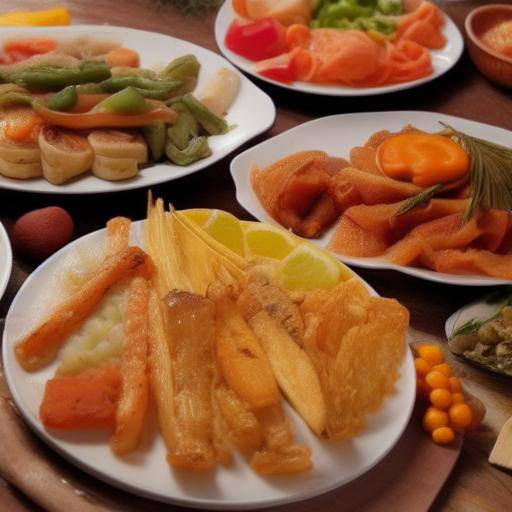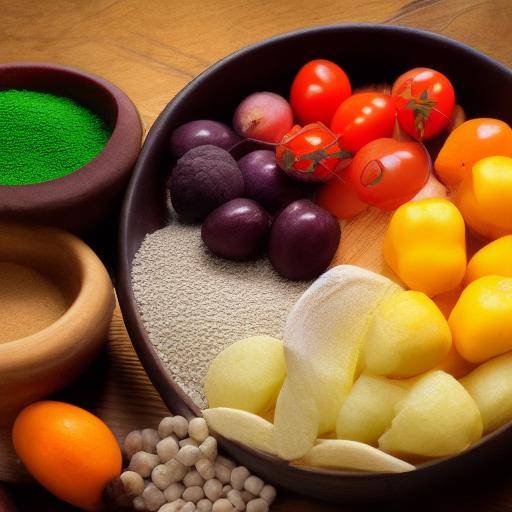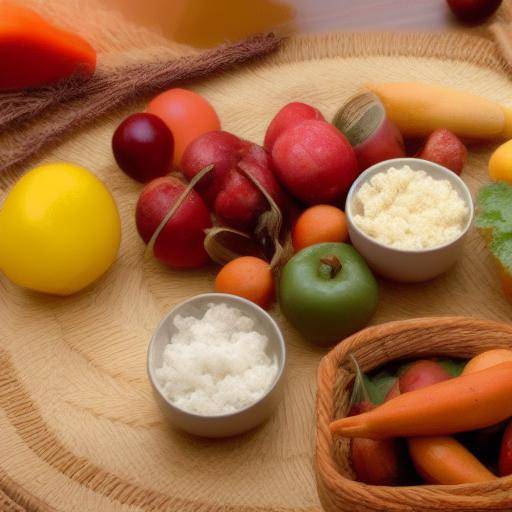
Sweets and desserts, infallible elements in culinary traditions around the world, have played significant roles in society and culture throughout history. From its historical roots to its influence on contemporary gastronomy, these delicacies have nourished the palate and soul of generations. In this article, we will thoroughly explore the meaning of sweets and desserts in culinary traditions, as well as their evolution, cultural impact, and future prospects.
Introduction
In the vast culinary diversity, sweets and desserts stand out as symbols of celebration, comfort and cultural connection. These exquisite delicacies, beyond their taste, reflect rooted traditions, values and customs that are transmitted from generation to generation in different communities around the world.
History and Background
Sweets and desserts have a fascinating history that goes back to ancient civilizations. The discovery of sugar and other sweeteners, the development of pastry techniques, and the influence of cultural exchanges have shaped the rich tradition of these delicacies.
From the times of Mesoamerican civilizations, such as Aztec and Mayan, to the expansion of Arab pastry on the Iberian peninsula during the Middle Ages, sweets and desserts have travelled through cultures, adapting and enriching with local ingredients and techniques. The incorporation of spices, fruits, nuts and liquors has led to a wide variety of sweets and desserts, each with its own cultural identity.
Sweets and desserts have not only been a culinary indulgence, but have also played a role in religious rituals, ceremonies and festivities in various cultures of the world, strengthening community and family ties.
Deep analysis
Beyond its historical importance, sweets and desserts continue to occupy a central place in contemporary gastronomy and culture. As awareness of health and sustainability grows, there is a debate about the balance between enjoying these delicacies and maintaining healthy eating habits.
There is a vast repertoire of desserts ranging from more traditional options to innovative and avant-garde creations, reflecting the diversity of lifestyles and culinary preferences. While some desserts make moderate use of sugar, others resort to more natural and nutritious alternatives, such as honey, maple syrup or stevia, as a response to the growing consumer demands of their food.
Comprehensive review
Sweets and desserts are not only a delight for the palate, but they also serve as vehicles to preserve and share culinary traditions. Through creativity and experimentation, refueling teachers have managed to merge techniques and flavors of different cultures, allowing mutual appreciation and enrichment.
Exploring the historical roots and narratives behind a dessert, such as the origin of its ingredients and its evolution over time, gives us a deeper understanding of its importance in culinary culture. The transmission of ancestral recipes and their adaptation to contemporary resources and tastes is crucial for the preservation of the culinary identity of a community.
Comparative analysis
The distinction between "sweet" and "postres" highlights the variety of flavors, textures and presentations that these delicacies can offer. While "sweet" usually refer to simpler preparations, such as candy, turbo or chocolates, "postres" include more elaborate options, which may include cakes, ice cream, mousses, among others.
However, the delimitation between sweets and desserts varies from one culture to another, and in some cases both terms can be used indistinctly according to the region.
Practical Tips and Accessible Recommendations
For those who wish to explore the processing of sweets and desserts in their own kitchens, it is important to take into account the precision in the measurement of ingredients, as well as the mastery of baking, cooking and decoration techniques. Here are some practical recommendations:
- Selection of fresh and high quality ingredients to achieve more authentic flavors.
- Experimentation with combinations of flavors and innovative presentations to bring originality to the preparations.
- Knowledge and mastery of basic pastry techniques, as well as the willingness to learn and perfect skills.
- Consideration of healthier alternatives in choice of ingredients, such as fresh fruits, nuts or natural sweeteners, to achieve more nutritionally balanced desserts.
Industry Perspectives and Expert Reviews
In a context in which gastronomy experiences constant evolution, sweets and desserts are presented as spaces of innovation and experimentation for chefs and refuelers. The introduction of contemporary techniques and concepts, such as molecular pastry or attention to food intolerances, demonstrated through gluten-free or dairy options, reflect the commitment of the industry to adapt to changing needs and trends.
According to industry experts, demand for healthy and sustainable desserts is expected to continue to increase, along with the growth of options that incorporate local and organic ingredients. In this sense, creativity plays a crucial role in achieving desserts that are not only delicious, but also aligned with existing concerns about conscious food and environmental impact.
Case Studies and Real Life Applications
In the restoration sector, the strategic inclusion of sweets and innovative desserts in the menus has proved to be an effective tool to differentiate an establishment and captivate the comensales. The careful presentation of these culinary delights, accompanied by evocative and attractive descriptions, can awaken the interest and curiosity of customers, thus contributing to a memorable gastronomic experience.
In addition, companies specializing in the manufacture of sweets and desserts have managed to expand their market presence by focusing on the quality, authenticity and diversity of their offers. Adapting to consumer preferences and exploring new formats, such as individual portions or alternatives for specific diets, have allowed these companies to remain relevant in a dynamic and competitive business environment.
Future Trends and Predictions
As awareness of health and well-being continues to rise, the sweets and desserts industry is expected to continue to evolve to meet the demands of a more informed and insightful consumer. Innovation in ingredients, preparation and presentation methods will play a crucial role in creating sweets and desserts that offer a balance between taste, nutrition and responsibility.
In addition, the integration of sustainable technologies and practices in the production and distribution of sweets and emerging desserts is a trend that promises to generate a positive impact on the industry. From waste reduction to the use of renewable energy sources, sector enterprises will increasingly focus on the adoption of strategies that contribute to the preservation of the environment.
Conclusions
Sweets and desserts are not only delicacies that delight our senses, but also witnesses and heirs of a rich cultural heritage. From their ancestral origins to their contemporary impact, these delicacies invite us to explore the diversity, creativity and evolution of culinary traditions over time.
Throughout the centuries, sweets and desserts have persisted as tasteful expressions of identity and appreciation for the flavors of life. Beyond their mere existence as culinary preparations, these delicacies continue to nurture human connections, becoming emblems of celebration, affection and memory.
Frequently asked questions
1. What is the difference between the terms "sweet" and "postres" in culinary traditions?
In culinary traditions, the distinction between "sweet" and "postres" can vary depending on the region and culture. In general, "sweet" usually refer to simpler preparations, such as candy, treats and chocolates, while "postres" include more elaborate options, including cakes, ice cream, mousses and other more complex desserts in their preparation.
2. How do sweets and desserts influence culture and celebrations around the world?
Sweets and desserts have played significant roles in culture and celebrations around the world. From their participation in religious rituals to their presence in festivities and special occasions, these delicacies have been symbols of joy, generosity and union in various communities and cultures.
3. What are some of the most emblematic sweets and desserts of specific culinary traditions?
Each culture has its own candy and emblematic desserts that reflect its unique culinary identity. Examples include baklava in the Turkish cuisine, flan in Spanish cuisine, tiramisú in Italian cuisine, mochi in Japanese cuisine and three-milk cake in Latin American cuisine, among many others.
4. What trends are visible in contemporary pastries in relation to sustainability and health?
Contemporary pastry is experiencing evolution towards healthier and sustainable options. There is growing interest in alternatives of desserts that use natural, organic and local ingredients, as well as in the reduction of refined sugars and the incorporation of gluten-free, dairy or other common allergen options.
5. What is the role of sweets and desserts in preserving culinary traditions?
Sweets and desserts play a crucial role in preserving culinary traditions by transmitting recipes, techniques and flavors across generations. The continued preparation and appreciation of these delicacies contributes to the conservation and dissemination of culinary narratives and practices rooted in history and culture.
6. How can pastry enthusiasts contribute to the celebration and perpetuation of culinary traditions related to sweets and desserts?
Pastry enthusiasts can contribute to the celebration and perpetuation of culinary traditions related to sweets and desserts by exploring and experimenting with authentic recipes, learning about their origins and cultural meanings, and spreading their knowledge and passion for these preparations.
In conclusion, sweets and desserts transcend their function as simple delicacies to become pillars of cultural identity, collective memory and emotional ties. Through its evolution over the centuries and its continued impact on contemporary gastronomy, these indulgent culinary pleasures are erected as indisputable protagonists in the narrative of humanity, nourishing both the body and the soul with its flavor and meaning rooted in culinary traditions.
With this, we invite you to explore and enjoy the diversity of sweets and desserts that enrich the table and the heart, celebrating the life, legacy and wealth of culinary traditions that unite us as human beings. How sweet is your way in exploring these gastronomic delights!
We hope that this article has given you an enriching and appetizing view of the meaning of sweets and desserts in culinary traditions. Good profit!
Remember that the experience of savoring a sweet or dessert goes beyond a simple indulgence; it is a journey through the history, culture and emotions that connect us with the world around us.







